WHAT YOU REALLY NEED TO KNOW
ABOUT COSMETIC SURGERY
Full Text from Dr. Berman's Book
Chapter 10
RHYTIDECTOMY
(Face-Lift)
In previous chapters, I emphasized that the aging process in the face is mainly an issue of decreasing volumes, principally fat. Nonetheless, at some point it is more expedient, and indeed preferable, to perform a face-lift procedure. The basic concept of a face-lift is to simply elevate the tissues of the face in order to restore a more pleasant contour.
As we age, the face undergoes fairly predictable changes. In general, as the volumes of fat, muscle, and bone decrease with age, there appears to be an excess of skin (and muscle) so that we tend to acquire new "less than pleasant looking" characteristics. We get jowls. Hooray! We develop nasal/labial folds (deep, permanent smile lines). Yippie! We get double chins and turkey gobbler necks. Oh, joy! You get the idea.
Traditionally, we've been told that our enemy is gravity. I say be thankful for gravity. Gravity gets a bum rap. Without it, my laptop computer would float off into space, but I would still get older looking. If gravity caused aging, why don't astronauts in zero gravity conditions look like teenagers? Gravity just determines how our aged faces will appear in different positions. If you don't like the way you look in a mirror while standing in front of it, try lying down and see how your face tends to smooth out. If you really want to scare yourself, put the mirror flat on the floor and look straight down at it. Yipes!
When you think about it, this may explain a lot of common situations about behavior. For example, the so-called snooty old ladies walking around with their noses in the air may simply be trying to improve the appearance of their neck line. Have you ever noticed how most "older" (feel free to determine what age "older" begins at) people always smile when being photographed. Smiling may be the cheapest face-lift.
At any rate, there are definite patterns of change with aging. I think the biggest difference is the overall thinning of the face. Again, I preach the cause for providing volume for the optimal repair. Nonetheless, a well done face-lift operation is often most helpful.
When should a person consider having a face-lift? Basically, it depends on the goal and desire of the individual. When I started practice it was common to recommend these procedures to persons in their fifties or sixties. The changes at this age tend to be fairly dramatic. However, there has been a trend toward operating on patients at a much younger age. While the changes in a forty year old might not appear that great, the results of a face-lift can often be quite rewarding. First of all, one's looks are not drastically changed. The classic line "you look so rested" really is often heard. Typically, the clock on appearance is being reset 7 to 10 years, which puts the patient at an age when they looked their best. Would you rather look 35 for ten extra years or wait until sixty to look 50?
So, once one decides that a face-lift may be in order, how is the procedure performed? Under anesthesia, general or local with intravenous sedation, the patient's skin is elevated from the face. Typically, an incision is made within the hairline of the temples, then curves around the front of the ear, up the back of the ear and then is hidden into the hairline on the back of the head. The skin is "elevated" or separated from the underlying tissues down to a point around the middle of the cheek and partly over the neck. After this is done, most surgeons will then free up the next layer of tissue which has muscle and fascia. This layer is commonly referred to as the SMAS, or subcutaneous musculo-aponeurotic system. This tougher tissue is then sutured higher up on the face acting as the main support for the face-lift. The skin is then gently redraped and the excess skin is excised along the original incision line. The wound is then closed, usually with metal clips (staples) behind the hairline, and sutures around the ear. People often wonder if the hair needs to be shaved. No it doesn't. The incision line can vary from patient to patient depending upon the position of the hairline or previous surgical scar placement.
If there is a lot of sagging in the neck area, or perhaps a lot of fat hanging under the chin, then some preliminary tasks may need to be performed in conjunction with the face-lift. Liposuction might first be done to remove excess fat. If the platysma muscle, the one that exhibits the two bands often prominent under the chin on the neck, is very saggy, then it might be wise to trim some excess tissue and/or sew the muscle together in the midline. A "sling" is created which helps support a smoother neckline.
Occasionally, the patient doesn't need a complete face-lift, but rather a "mini-lift". There is a procedure that can be done endoscopically (looking through a tiny camera) or by direct vision. It basically is done on the patient who has a clean neckline and is just starting to get some drooping in the cheek and jowl area. Through a small incision, hidden behind the hairline above the ear, the skin is carefully elevated from the underlying tissues. The underlying fascial layer is then suspended with two or three well placed permanent sutures. A small amount of excess tissue is removed and the wound is closed. A light compressive dressing is applied overnight.
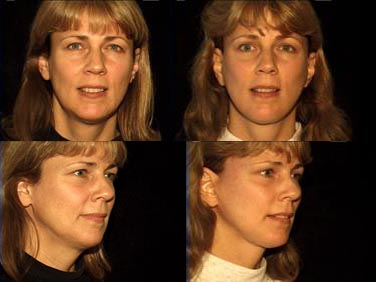
Before (left) and after (right) face-lift, along with slight upper blepharoplasty and facial fat-grafting. When dealing with younger patients, you tend to get better results because they still have fairly good facial fat volume.
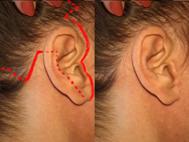
The same patient as the previous photos, demonstrates the position of the incisions on the left, with the barely visible scar on the right.
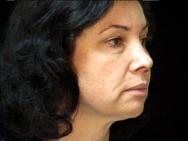
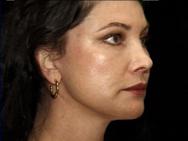
Slightly older, but still with fairly good facial volume, an ideal candidate for a face-lift. She also had the lower lid fat "transposed" downward over the rim of the cheek and facial fat grafting. Note that only fat was added to the upper lid and no skin was excised, restoring a natural, youthful appearance.
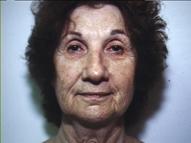
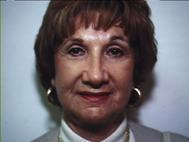
As you get older, sustain more photo damage to the skin and lose more facial volume, a face-lift still helps, but laser peels and fat grafts and malar implants will be useful too. This patient had a face-lift, blepharoplasty,rhinoplasty and laser re-surfacing 6 months later.

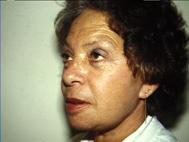
An older woman with a lot of sub-mental (below the chin) fat and sagging platysma muscles. The expedient procedure is a face-lift which included sub-mental liposuction, platysma plication (tying the muscles together under the chin to form a sling). This helps get rid of the so-call turkey gobbler neck.
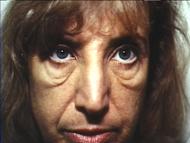
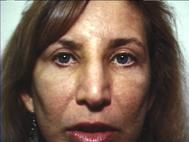
This patient has a few problems. There is considerable loss of fat volume, so not only does she have bags under her eyes, she has malar festoons as well. Her lower eyelids are also very lax, so she has scleral show (you can see the whites of her eyes under her pupil). Almost any eyelid procedure on her will cause the skin to pull even further down, causing a worse condition, called an ectropion. So, she under went a face-lift, but also had malar implants and fat grafting performed. She had an upper blepharoplasty and a special lower blepharoplasty where the lower lid tissues were tightened (lateral canthal shortening in this case).
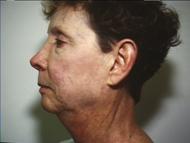
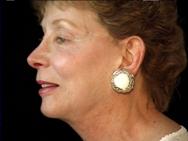
In addition to a face-lift and fat grafting, chin and malar implants were added to improve the contours of her face.
Another procedure which has become quite popular is the coronal lift, also known as the forehead lift. It too, can be done endoscopically through tiny incisions. It's purpose is to raise the eyebrows and remove the muscles which contribute to frowning. In many offices, this operation has become the "rage". My personal preference (editorial time) is to do it sparingly. An occasional patient will seem to have a very low brow with a menacing appearance. However, most people are simply "suffering" from a loss of fat under the skin and over the muscles. Thus the muscles come in direct contact with the skin. With nothing to cushion the skin against the contraction of the underlying muscles, creases in the skin become more prominent. The eyebrows and eyelids appear to show drooping. If you elevate the brow, you are simply raising the skin over the bone, and often removing wrinkles, but skeletonizing the patient. This can contribute to the hollowed "surgical" look which is becoming a common, if not popular, appearance. It may indeed make one's face look smoother, but it may look a little too surgical, and certainly not more youthful and attractive as is possible by correcting the real problem of volume deficit. Fat-grafting, or the placement of implants such as Gore-Tex or silicone rubber, may be more valuable. Patients who have already had one or two lifting procedures are particularly vulnerable to receiving the unnatural surgical look if volume adjustments are not made. Nonetheless, on the right patient, the results of a brow lift can be very good. Some people simply prefer the appearance of a higher brow.
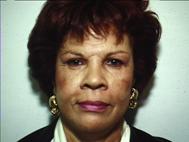
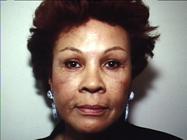
Occasionally, a patient prefers the higher brow and the removal of the scowling look by way of a coronal lift. It's possible, that Botox and fat grafts may have been advantageous had they been available at the time. Nonetheless, she is still a definitely good candidate for a coronal or brow lift procedure.
Also, instead of cutting the muscles which wrinkle the forehead and cause frowning, they can be treated with Botox injections. Botox is botulinum toxin. When injected in appropriate amounts, it causes paralysis of the muscles for 4 to 6 months. These injections are used to remove the wrinkling by paralyzing the muscle, but would prevent indentations and defects that have been seen when traditionally cut. It is felt that when repeated once or twice as the muscle activity returns, enough muscle deterioration will occur so that future injections will not be necessary.
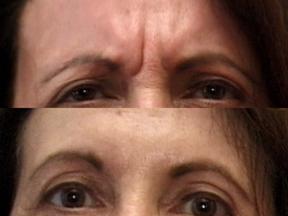
Following BOTOX injections to the frown muscles, this patient no longer has a crease in her forehead. She won't be able to frown until the BOTOX wears off between 4 and 6 months later.
Other procedures can often be performed in conjunction with the face-lift. Most commonly, blepharoplasty (eyelid tuck) is done at the same time. Malar (cheek), chin, and temporal augmentation can be helpful in restoring fullness to the face. Fat-grafting can be helpful as well. Quite often the face-lift procedure is the first step in restoring a youthful appearance. It is not uncommon to allow the face-lift to heal, then three to six months later return for fat grafting, or a laser skin re-surfacing, or other "filling" procedures.
Each patient must customize their course of treatment with the surgeon. There is no one procedure that fits everybody. Today, there are several different approaches to face-lift surgery, e.g. sub-periosteal face-lift, deep-plane or composite face-lift, SMAS (subcutaneous myo-apeurnotic system) lifting, or just skin lifting. Your surgeon should explain and discuss her/his preference for the various technique being offered.
Typically, the procedure is performed as an out-patient. The patient can go home or to a post-operative care facility. Generally, dressings are removed within a day or two following surgery. The patient can usually shower then, and simply applies an antibiotic ointment around the wounds. The use of oral antibiotics, pain medications, steroids, homeopathic medications, etc. may vary from doctor to doctor.
The risks of face-lift surgery include possible facial nerve damage. The nerve that provides enervation of the facial muscles is rarely damaged in spite of its close proximity to the surgical dissection. A branch of the greater auricular nerve, a sensory nerve that enervates the ear lobe, is the nerve most often injured and this too is fortunately rare. Bleeding during the procedure is usually quite minimal, but occasionally blood may accumulate under the skin after the operation. Such collections of blood, known as a hematoma, are usually due to the inadvertent ingestion of aspirin or a product with aspirin. Such hematomas require evacuation and can be very difficult to treat. It is essential that the patient strictly avoid aspirin intake prior to surgery. Small collections of blood may occur and require simple aspiration or no treatment. Infection is a very rare complication. Hair loss can occur permanently if the follicles are actually injured, but most often it is only temporary and the hair returns over a period of months.